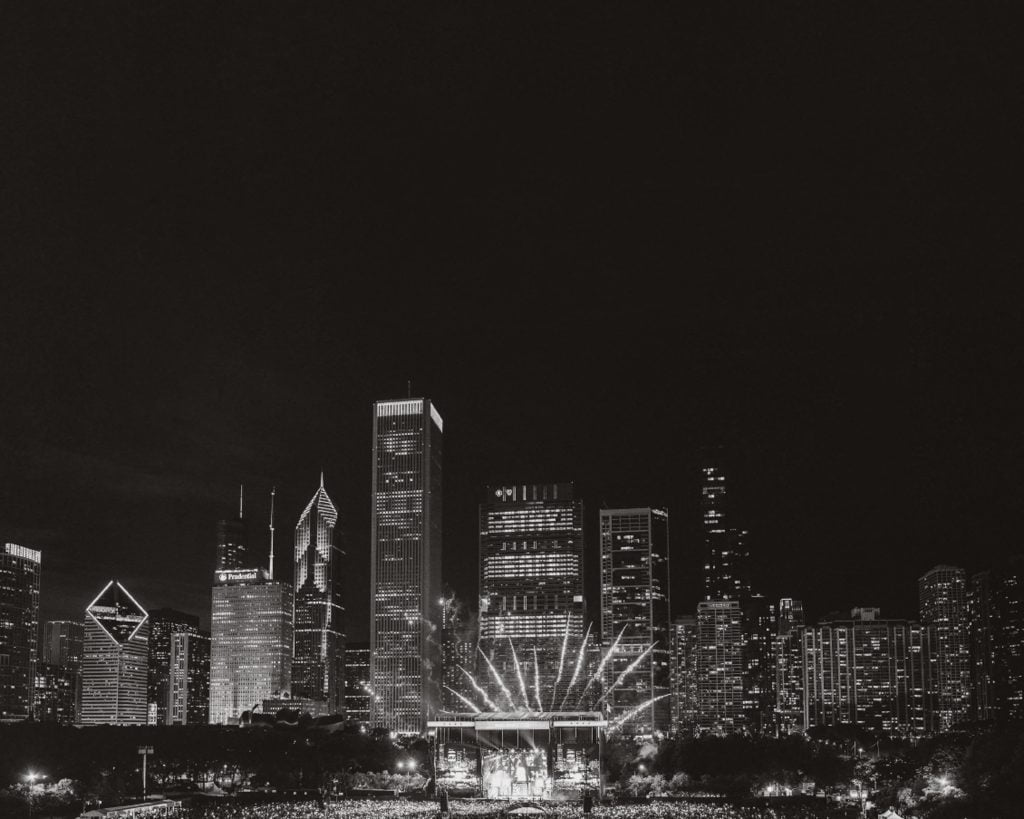Join us on a captivating journey back to 1969 as we delve into the iconic Harlem Cultural Festival lineup. This legendary event showcased an incredible array of musical talent that left a lasting impact on history. From soul-stirring performances by legends like Nina Simone, Stevie Wonder, and Sly and the Family Stone to the electrifying energy of the Fifth Dimension and the raw power of BB King, the lineup was a true reflection of the diverse and vibrant cultural tapestry of Harlem.
Get ready to explore the rich history and significance of this momentous festival as we unravel the stories behind the performances that defined an era and continue to inspire generations of music lovers worldwide.
Introduction to the 1969 Harlem Cultural Festival
The 1969 Harlem Cultural Festival, also known as the “Black Woodstock,” was a historic music event held in Harlem, New York. Organized by Tony Lawrence, it took place over six weekends in Marcus Garvey Park, celebrating African American music, culture, and pride.
Origin and Significance
The festival aimed to provide a platform for Black musicians and artists who were often marginalized in the mainstream music industry. It showcased a diverse lineup of legendary performers, including Nina Simone, Stevie Wonder, Sly and the Family Stone, and more.
The event was a pivotal moment in the civil rights movement, symbolizing unity, empowerment, and resilience within the Black community.
Legacy and Impact
The 1969 Harlem Cultural Festival left a lasting impact on music history, influencing future generations of artists and shaping the cultural landscape of America. Despite its significance, the festival was overshadowed by Woodstock, receiving limited recognition until the release of the documentary “Summer of Soul” in 2021.
This documentary unearthed the incredible performances and cultural significance of the festival, bringing long-overdue recognition to this groundbreaking event.
Historical Context of the Festival
The 1969 Harlem Cultural Festival, also known as the “Black Woodstock,” was a pivotal event that took place in the midst of the Civil Rights Movement. The festival was a celebration of African American culture, music, and pride during a time of social and political upheaval.
Legacy of the Civil Rights Movement
The festival served as a platform for artists to express their solidarity with the ongoing struggle for civil rights and equality in America. Many performers used their music to advocate for social change and racial justice, making the event a powerful symbol of resilience and unity.
The 1969 Harlem cultural festival lineup featured iconic artists such as Nina Simone, Stevie Wonder, and Sly and the Family Stone, who used their performance to amplify the voices of marginalized communities.
Socio-cultural Impact
The festival showcased the richness and diversity of African American music, from soul and gospel to jazz and R&B, highlighting the cultural contributions of the Black community to the global music scene. The event not only celebrated black excellence but also served as a platform for empowerment and self-expression.
- The festival provided a safe space for African Americans to come together, celebrate their heritage, and express their creativity in a society that often marginalized their voices.
- By bringing together people from diverse backgrounds, the festival promoted unity, understanding, and solidarity across racial lines, fostering a sense of community and belonging.
Significance of the 1969 Harlem Cultural Festival
The 1969 Harlem Cultural Festival holds immense significance in the history of music and African American culture. Taking place during a pivotal moment in the civil rights movement, this festival showcased the talent and resilience of Black artists. The festival, often referred to as the “Black Woodstock,” featured iconic performances that celebrated Black pride and unity.
Celebration of Black Excellence
The festival lineup boasted a stellar array of artists, including Stevie Wonder, Nina Simone, and Sly and the Family Stone, who used their music to uplift and inspire the audience with messages of empowerment and liberation.
Cultural Reclamation
The 1969 Harlem Cultural Festival was not just about music; it was a cultural reclamation for the Black community. The festival provided a platform for artists to showcase their talents and express their identities without limitations, paving the way for future generations of musicians.
Exploring the Lineup: Iconic Performances
The 1969 Harlem Cultural Festival lineup was a gathering of musical legends that left a lasting impact on the history of music. From soulful performances to powerful cultural expressions, this festival showcased the best talent of the time.
The Legendary Headliners
Among the iconic performances was Nina Simone’s mesmerizing set, where she captivated the audience with her soul-stirring vocals and powerful message. The 1969 Harlem Cultural Festival lineup also featured the legendary Stevie Wonder, who delivered an unforgettable performance that resonated with the crowd.
Impactful Cultural Expressions
The festival was a platform not only for musical entertainment but also for cultural expression and unity. Artists like Sly and the Family Stone brought a fusion of funk and soul, creating a musical experience that transcended boundaries. Their performance added a dynamic and inclusive vibe to the festival.
Notable Artists and Musical Genres Represented
Exploring the legendary 1969 Harlem Cultural Festival lineup unveils a diverse array of notable artists and iconic musical genres celebrated during the event. From soulful performances to electrifying showcases, the festival showcased the richness of musical talent from that era.
Iconic Artists
The lineup featured legendary musicians such as Stevie Wonder, Nina Simone, and Sly and the Family Stone, whose groundbreaking performances captivated the audience with their unforgettable talents.
Diverse Musical Genres
The 1969 Harlem Cultural Festival was a melting pot of musical genres, from funk and soul to rock and jazz. Each genre brought a unique flavor to the festival, further showcasing the cultural significance of the event.
Impact of the Festival on Music and Culture
The 1969 Harlem Cultural Festival had a profound impact on both music and culture, shaping the landscape of both realms for years to come.
Influence on Music
The lineup of legendary artists who performed at the festival showcased the diversity and richness of African American music, from soul and funk to jazz and gospel. This eclectic mix of genres not only entertained the audience but also paved the way for the mainstream acceptance of Black music.
Artists like Nina Simone and Stevie Wonder used their performances to convey powerful messages of civil rights and social justice, making the festival a platform for activism through music.
Impact on Culture
The cultural significance of the 1969 Harlem Cultural Festival cannot be overstated. It served as a rallying point for the Black community, celebrating their heritage and resilience in the face of oppression.
The festival’s atmosphere of unity and pride resonated with attendees of all backgrounds, fostering a sense of solidarity and understanding among diverse audiences.
Legacy of the 1969 Harlem Cultural Festival
The 1969 Harlem Cultural Festival left an indelible mark on musical history, showcasing a lineup of legendary artists that continues to inspire and influence performers to this day. The festival, also known as the “Black Woodstock,” celebrated African American culture and music, bringing together diverse talents from various genres.
Historical Significance
The festival was a pivotal moment in the civil rights movement, using music as a platform for social change and unity. Artists such as Nina Simone, Stevie Wonder, and Sly and the Family Stone graced the stage, delivering powerful performances that resonated with the audience.
Cultural Impact
The 1969 Harlem Cultural Festival highlighted the richness and diversity of African American music, from soul and R&B to jazz and gospel. It served as a platform for Black artists to shine and paved the way for future music festivals that celebrated diversity and inclusivity.
Frequently Asked Questions
- What was the 1969 Harlem Cultural Festival?
- The 1969 Harlem Cultural Festival, also known as the ‘Black Woodstock’, was a historic music festival that took place in Harlem, New York City, during the summer of 1969.
- Who were some of the legendary artists that performed at the 1969 Harlem Cultural Festival?
- The lineup of the 1969 Harlem Cultural Festival included iconic artists such as Stevie Wonder, Nina Simone, Gladys Knight & the Pips, Sly and the Family Stone, B.B. King, and many more.
- Why is the 1969 Harlem Cultural Festival considered significant?
- The 1969 Harlem Cultural Festival is considered significant as it showcased an incredible lineup of African American musicians and artists during a time of social and political unrest in the United States.
- What impact did the 1969 Harlem Cultural Festival have on the music industry?
- The festival had a profound impact on the music industry by highlighting the talent and artistry of African American musicians and influencing future music festivals and events.
- Are there any documentaries or films about the 1969 Harlem Cultural Festival?
- Yes, a documentary titled ‘Summer of Soul’ directed by Questlove was released in 2021, showcasing footage from the 1969 Harlem Cultural Festival and its significance.
Final Reflections on the Legendary 1969 Harlem Cultural Festival Lineup
Exploring the 1969 Harlem Cultural Festival lineup has been a captivating journey through a pivotal moment in musical history. The lineup, featuring iconic artists like Nina Simone, Stevie Wonder, and The Staple Singers, showcased the power of music in uniting communities and advocating for social change. This festival served as a platform for African American artists to shine and celebrate their cultural heritage amidst a challenging time in American history.
As we reflect on this historic event, we are reminded of the enduring legacy of the artists who graced the stage and the impact they had on shaping the cultural landscape of not only Harlem but the world. The 1969 Harlem Cultural Festival lineup stands as a testament to the resilience, creativity, and unity that music can foster, leaving a lasting impression on all who were fortunate enough to witness it.



